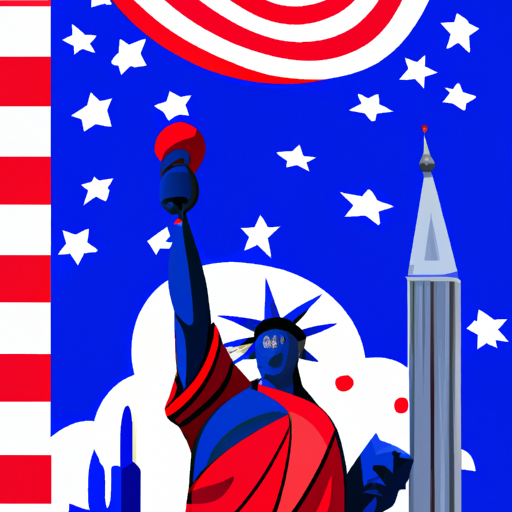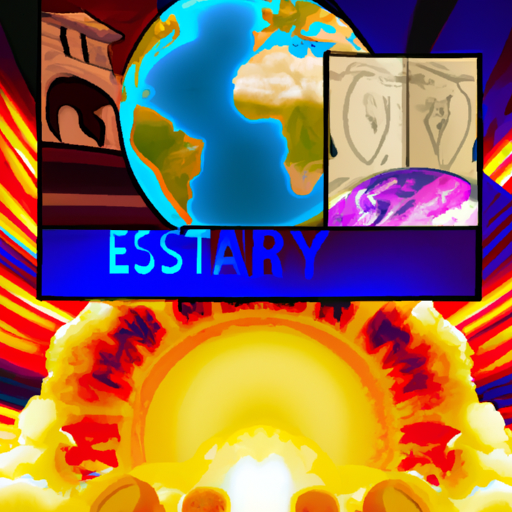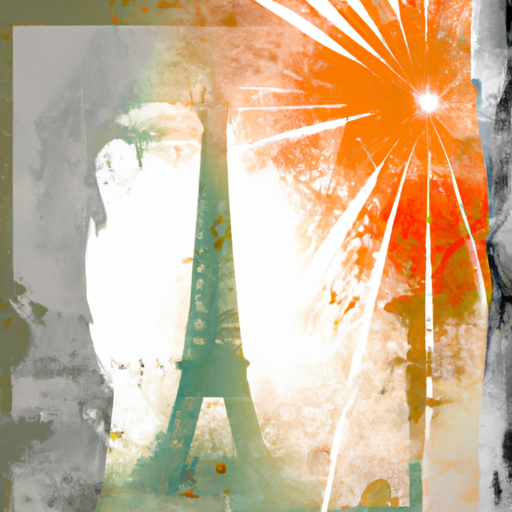History of the Smallest Country in the World
Delve into a realm of mystique and intrigue, of the world’s most diminutive nation. Uncover the captivating past of the Vatican City, an independent state located within Rome, Italy. Delve into its rich history and discover how it has grown to become one of the world’s most iconic and influential places. From its beginnings as a small hamlet in BC to its current status as the headquarters of the Catholic Church, explore how this tiny country has managed to make such an impact on our lives today. Discover how it has shaped religion, politics, art and culture around the globe for centuries. Unearth the secrets behind its walls and uncover why it remains one of the most popular tourist destinations in Europe.

A captivating story of over two and a half millennia, the Vatican City began as a humble hamlet on the outskirts of Rome in 753 BC. Over time it developed into an independent state located within Rome, Italy. Throughout its long and fascinating history, the Vatican City has been host to momentous events and influential figures. Pope Gregory I called it home in 590 AD, leaving behind a legacy of traditions and doctrines that remain integral to the Catholic Church today. During the Renaissance period, its walls were adorned with masterpieces from some of the world’s most renowned artists such as Michelangelo. Even now, it stands as one of the most significant religious sites in the world, housing iconic monuments and buildings like St. Peter’s Basilica and Sistine Chapel. Its impact on global politics, artistry and culture is still felt today; making its past both enthralling and inspiring.
.
Introduction

A mere 0.44 km2 (0.17 sq mi) of territory, a population of scarcely 800 souls, and yet – it stands alone, an independent state unlike any other. This is Vatican City – the smallest country in the world! Established in 1929 by the Lateran Treaty between the Holy See and Italy, this sovereign city-state within Rome has since been the spiritual heart of Catholicism and home to its leader. Despite its diminutive size, Vatican City has managed to remain remarkably autonomous from other nations and maintain its own government, laws, currency, postal service, and media outlets. Truly a marvel!
– Historical Overview of the Smallest Country in the World
From the 4th century, a donation from Roman Emperor Constantine I to Pope Sylvester I in 313 AD saw the formation of what is now known as Vatican City. This area was ruled by the Pope for centuries until it was annexed by Italy in 1870. In 1929, an agreement between the Italian government and the Holy See established Vatican City as an independent state, located within Rome and housing some of Christianity’s most iconic landmarks such as St. Peter’s Basilica and Sistine Chapel. Populated mainly by clergy members and personnel working for the Holy See, this tiny nation has its own postal service, radio station, newspaper and currency (the Euro).
Vatican City is active in international affairs with diplomatic relations with over 180 countries and membership of several global organizations like UNESCO and NATO’s Mediterranean Dialogue program. It also acts as a mediator between different religious denominations while striving to promote peace throughout the world. Despite its small size, this microstate has had a huge impact on our world throughout history and continues to be influential today.
– Exploring the History of the Smallest Country in the World
The minuscule nation of Vatican City is the smallest country in the world. With a population of only over 800 and an area of 0.2 square miles, this unique place has an extraordinary past. Established as a sovereign state in 1929, its beginnings can be traced back to the 4th century AD when Emperor Constantine legalized Christianity across the Roman Empire. As a result, Pope Sylvester I was able to construct St. Peter’s Basilica, which became the core of Catholicism in Rome. The Papal States were then formed in 754 AD, granting temporal control over a vast region around Rome to the pope.
Giuseppe Garibaldi’s Italian forces captured Rome in 1870 and declared it part of unified Italy, eliminating the Papal States and leaving no political authority for the pope. In response, Pope Pius IX declared himself “a prisoner in the Vatican” until Italy acknowledged his sovereignty over what is now Vatican City. This standoff was resolved with the Lateran Treaty signed in 1929 which established Vatican City as an independent state and granted extraterritorial rights over certain regions within Italy including St. Peter’s Square and parts of Castel Sant’Angelo.
Despite its size, Vatican City has been preserved relatively unchanged since then with its own police force, postal service, radio station and newspaper – all managed by the Catholic Church – as well as diplomatic relations with more than 180 countries worldwide plus millions of visitors annually that come to view its remarkable architecture or visit noteworthy sites like St. Peter’s Basilica or The Sistine Chapel.
Vatican City may be one of the tiniest countries today but it has had a significant effect on global history and continues to be a major center for religion and culture – making it worth delving into its abundant history!
– Impact of History on the Smallest Country in the World
Enveloped in a shroud of mystery, San Marino, the world’s smallest country, has been profoundly affected by its past. Boasting a mere 33,000 inhabitants and measuring only 61 square kilometres, it is one of the least densely populated countries. Despite its diminutive size, San Marino has an incredibly long and rich history that has helped to shape its culture and identity.
It was in 301 AD when Marinus, a Christian stonemason who had fled persecution in Dalmatia, constructed a small stone fortress on Mount Titano. This would become the nucleus of what we now know as San Marino. Since then, the Republic of San Marino has remained independent from any other nation – making it one of the oldest surviving republics in the world!
San Marino’s strong ties to both Italy and papal rule have heavily influenced its development over time. In 1631 Pope Urban VIII granted independence to San Marino on condition that loyalty to Rome was maintained – thus allowing them to remain autonomous but still under papal protection. Nowadays their education system and holidays are still very much intertwined with Roman Catholicism.
The strategic location between Italy and the Adriatic Sea also played an important role throughout its history; with major ports such as Venice and Ancona close by, San Marino served as an important trading post during medieval times. It was also used as a refuge for those fleeing political or religious persecution across Europe at this time.
Today, despite being surrounded by much larger countries with greater resources at their disposal, San Marino continues to thrive due to its long-standing tradition of neutrality and low taxes which attract businesses from all over Europe – making it one of the most prosperous countries in Europe given its size and population density! Its unique history has shaped it into a vibrant nation with strong cultural ties that remains resilient today.
– Uncovering the Origins of the Smallest Country in the World
Since antiquity, the presence of a papal figure in Rome has been a remarkable part of its history. In 4th century CE, Pope Sylvester I was elected as Bishop of Rome, signifying the start of papal control over the city. This led to the Papal States being formed in 754 CE which persisted until Italy’s unification in 1870. In response to this development, Pope Pius IX refused to accept Italian authority and declared himself a prisoner in his own palace.
Subsequently, negotiations between Italy and France resulted in the signing of a concordat that recognized both countries’ rights over certain territories within Italy. As part of this agreement, an independent state was established under papal sovereignty – the Vatican City – with its own government and currency. Since then, it has remained autonomous while being surrounded by Rome on all sides.
The Vatican City is known for its spiritual significance and is visited by millions every year who come to see its monuments and artifacts related to ancient customs such as St Peter’s Basilica or Sistine Chapel. Despite its small size, it serves as an emblematic reminder of our shared cultural heritage that should not be forgotten.
– Examining How History Has Shaped the Smallest Country in the World
The minuscule nation of Monaco is one of the tiniest countries in the world, and its history has been a major factor in forming it into the vibrant state it is today. Nestled between France and Italy, Monaco has taken influence from both nations’ culture and language, as well as its own distinct identity. By exploring how the past has shaped this miniature country, we can gain a better understanding of Monaco’s evolution over time.
Monaco was initially home to the Ligurians, who lived in the area around 500 BC. Afterward, the Romans founded a colony there in 14BC and named it Monoecus Portus – or “Port of Hercules” – as they believed it had been created by Hercules himself. Throughout subsequent centuries, Monaco was conquered by several different states including Spain and France before eventually becoming an independent state under Prince Charles III in 1861.
History has had an immense effect on shaping Monaco’s economy and culture. In 1869, Charles III established Monte Carlo Casino which brought substantial wealth to the country and enabled further progress to take place. This money facilitated construction of modern infrastructure such as roads and railways that connected Monaco with its neighboring states like France and Italy; additionally, it allowed for new businesses to open up in Monte Carlo which provided more job opportunities for locals.
Apart from economic changes due to its past, Monaco’s culture has also been greatly impacted by its former rulers. For example, French continues to be one of the main languages spoken there today due to its long-standing ties with France while Italian influences are also apparent due to its close proximity with Italy. These cultural connections remain integral parts of life in Monaco even now – making it an intriguing mix of diverse cultures from all across Europe.
In conclusion, history has had an immense impact on forming what we know today as Monaco: from its economy and infrastructure to its culture and language. By examining how history has molded this unique nation we can comprehend how it perseveres despite being one of the littlest countries worldwide.
conclusion

A bewildering tale, one of antiquity and intrigue, is that of the littlest nation on our planet. Through the ages, it has changed hands between a few countries, including Vatican City, Monaco, and Nauru. Presently, it is Vatican City that holds the title; its total area measuring a meager 0.44 km² (0.17 mi²). It stands as an independent city-state within Rome, Italy and serves as residence to the Pope and headquarters of the Catholic Church.
.
Some questions with answers
Q1. What is the smallest country in the world?
A1. The smallest country in the world is Vatican City.
Q2. How did Vatican City become a country?
A2. In 1929, the Lateran Treaty was signed between Italy and the Holy See, making Vatican City an independent state.
Q3. What is its history?
A3. Vatican City has a long and rich history dating back to ancient Roman times. It became an independent state in 1929 when the Lateran Treaty was signed between Italy and the Holy See.
Q4. What type of government does it have?
A4. Vatican City is a theocracy with an absolute monarchy led by the Pope as its head of state.
Q5. Does it have any other historical significance?
A5. Yes, Vatican City is home to many important religious sites and artifacts, including St Peter’s Basilica and Sistine Chapel, as well as numerous works of art and other cultural treasures from around the world.



